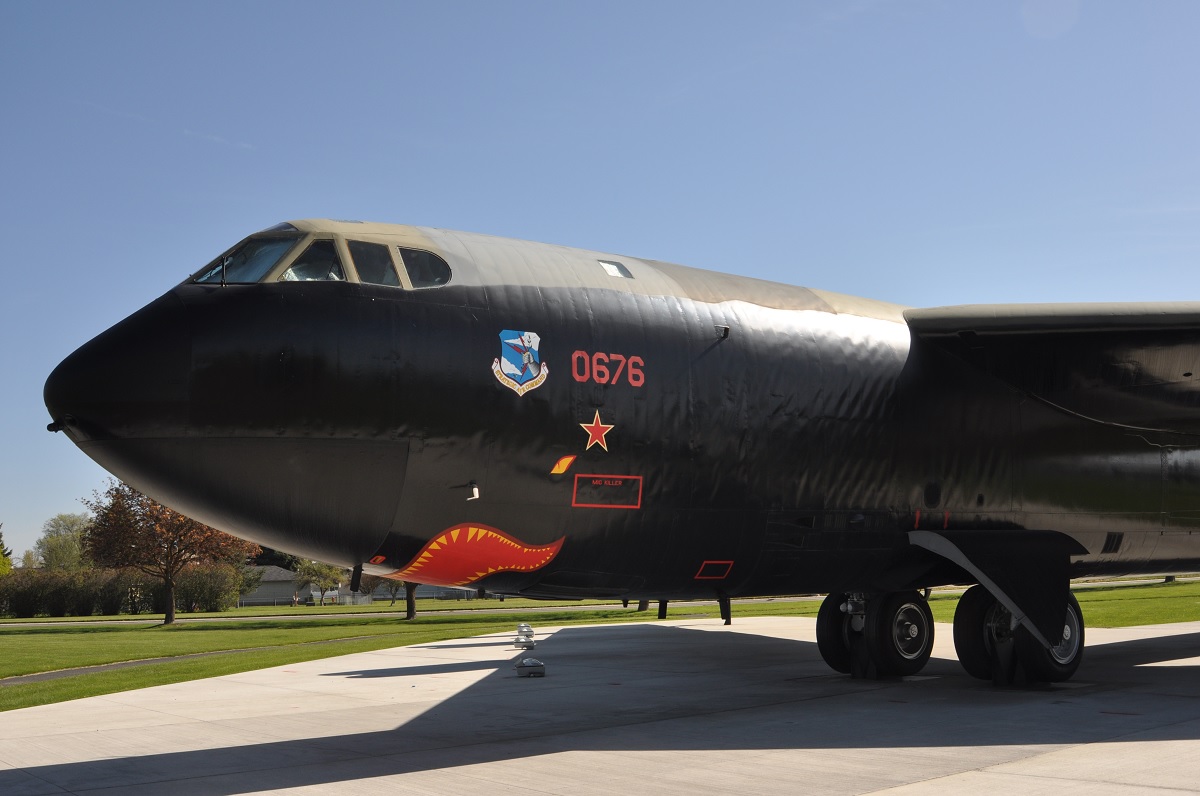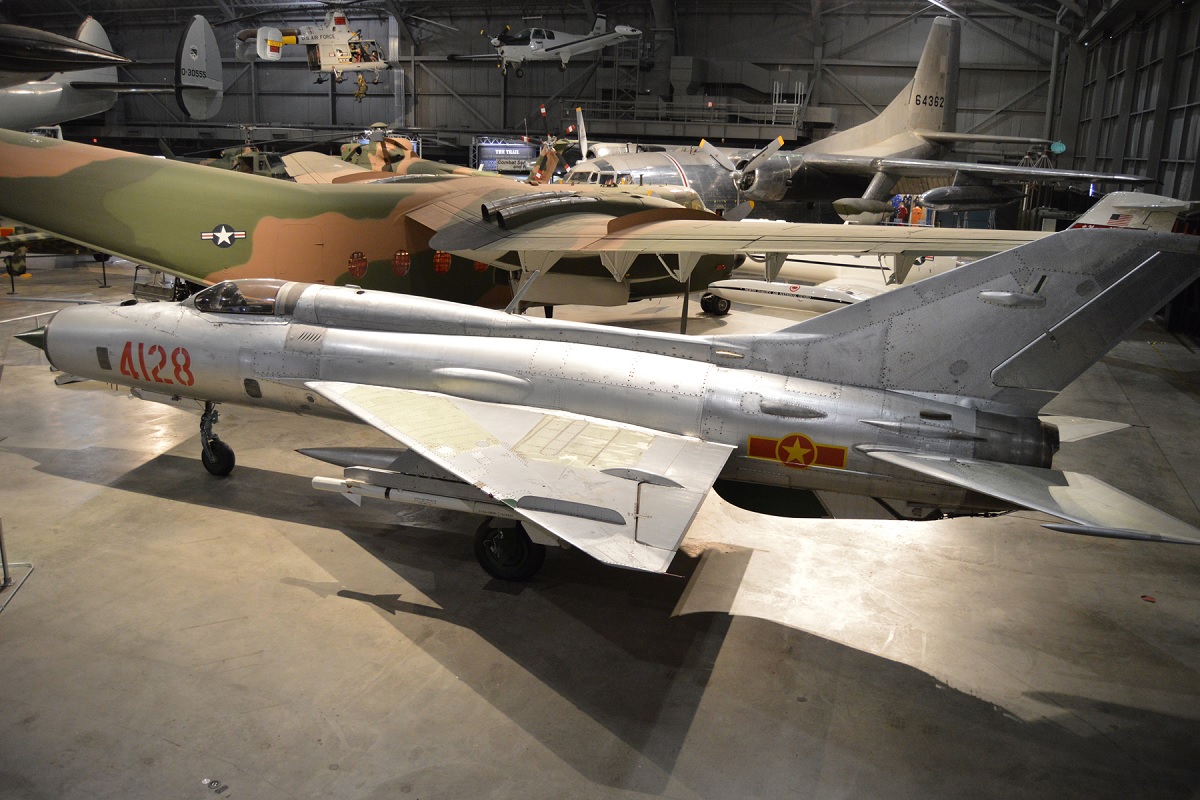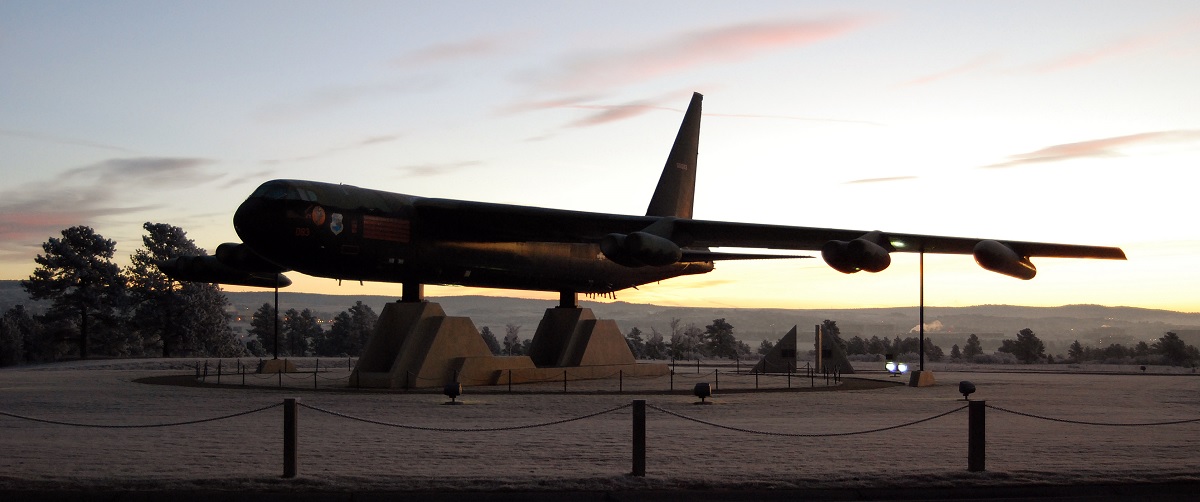The two BUFF MiG kills occurred during Operation Linebacker II, the Christmas-time strategic air assault against the logistical and industrial hub of North Vietnam
The Boeing B-52 is the quintessential example of strategic airpower in action. Originally designed to carry a hydrogen bomb over intercontinental distances, the Stratofortress saw extensive use in conventional bombing during the Vietnam War, turning it into a MiG killer by downing two MiG-21 fighters.
Both MiGs were destroyed during Operation Linebacker II, the Christmas-time air onslaught against North Vietnam’s logistical and industrial core that got underway after the Paris peace talks ended in failure. Two B-52D tail gunners from the 307th Strategic Bomb Wing stationed at U-Tapao RTAFB (Royal Thailand Air Force Base), Thailand, continued the long tradition of tail gunners from prior wars by shooting down two North Vietnamese Fishbeds during this air operation.

The four.50-caliber M3 machine guns installed at the rear of the D model of the Stratofortress made it possible for these accomplishments, and they possibly made the B-52 the last strategic bomber to shoot down an enemy fighter. The 600-round weapons on board the A-3A fire control system search and tracking radar may be handled remotely from the forward fuselage by the gunner or manually by a tail gunner.
On December 18, 1972, 129 bombers (42 B-52Ds from U-Tapao, 87 BUFFs between B-52Ds and B-52Gs from Andersen Air Force Base on Guam) were launched to attack rail yards and logistical facilities in and around Hanoi as well as the MiGs bases at Kep, Hoa Loc, and Phuc Yen. This was the first of the two MiG kills. B-52 Stratofortress: The Story of the BUFF from Drawing Board to the Skies over Afghanistan by Bill Yenne claims that the bombers flew in three aircraft cells for mutual ECM (Electronic Counter Measures) defense.
The B-52D Tail No. 56-0676, callsign Brown III, which had Sgt. Samuel O. Turner working as a tail gunner was one of the bombers. Numerous SAMs (Surface to Air Missiles) were fired throughout the bomb run to the target, and anti-aircraft fire of all calibers exploded close to Brown III.

When the B-52Ds arrived at their objective and dropped their bombs, several MiGs took off to intercept them as they were flying back to base. Turner was able to lock on to the incoming Fishbed and, as it was in the firing line, he opened fire on it, hitting the back of the MiG-21, which burst into a big inferno. One of the MiG-21s was prepared to launch its missiles toward Brown III. According to Donald J. McCarthy, Jr. in his book MiG Killers A Chronology of U.S. Air Victories in Vietnam 1965-1973, this kill was the first for a bomber crew since the Korean War, and it had also been confirmed by MSgt. Lewis E. Le Blanc, who was a tail gunner on another B-52.
At the Fairchild AFB Heritage Park in Spokane, the B-52D with the tail number 55-0676 is still on display and still carries the iconic MiG Killers logo, a red star under the cockpit.
On December 24, 1972, Christmas Eve, the second Stratofortress aerial victory of the Vietnam War occurred. During the bomb run, the B-52s were assaulted by the MiGs, and thirty BUFFs that took off from U-Tapao had to hit rail yards at Thai Nguyen and Kep, 40 miles north and northeast of Hanoi. A1C Albert E. Moore, the tail gunner of the B-52D Tail No. 55-0083, Diamond Lil, noticed one of them on the radar sight. At 4,000 yards, he latched onto the Fishbed and started firing at the blip on his radar scope until it vanished.

In his combat report, according to a lengthy essay by Tom Docherty that was published in FlyPast magazine’s December 2015 issue, Moore wrote: “I observed a target on my radar scope 8 o’clock low at 8 miles. I immediately notified the crew, and the ‘bogey’ started closing rapidly. It stabilized at 4,000 yards, at 6 o’clock. I called the pilot for evasive action and the EWO for chaff and flares. When the target goes to 2,000 yards, I notified the crew that I was firing. I fired at the bandit until it ballooned to three times in intensity then suddenly disappeared from my radar scope at approximately 1,200 yards. I expected 800 rounds in three bursts.”
This kill too was confirmed by another tail gunner, TSgt. Clarence W. Chute, reported: “I went visual and saw the ‘bandit’ on fire and falling away. Several pieces of the aircraft exploded, and the fireball disappeared in the undercast.”
Also preserved and on display at the United States Air Force Academy in Colorado is the B-52D tail number 55-00083. According to Vietnamese authorities, a B-52 downed a MiG-21 on April 16, 1972, earning its third air-to-air win.
General George L. Butler, who was in charge of Strategic Air Command (SAC) at the time, announced the removal of the gunner post and the deactivation of the B-52’s guns on September 16, 1991. As a former B-52 gunner explained to us “we (Gunners) were done away with for two reasons 1) Budget. It was very expensive to maintain the Fire Control System. It was the ONLY system on the jet that had never been updated. It still used vacuum tubes! If a part broke and couldn’t be located, it had to be made. This was very expensive. And 2) Missile technology had become advanced enough to shoot aircraft down from beyond visual range. The guns were obsolete unless a fighter was dumb enough to try and get close enough to use its guns on the BUFF. Those are the facts.”
Since then, a generation has passed since the BUFF had a tail gunner, and the days of a fighter having to be cautious when attempting to get behind a B-52 are long gone.
Photo by U.S. Air Force

